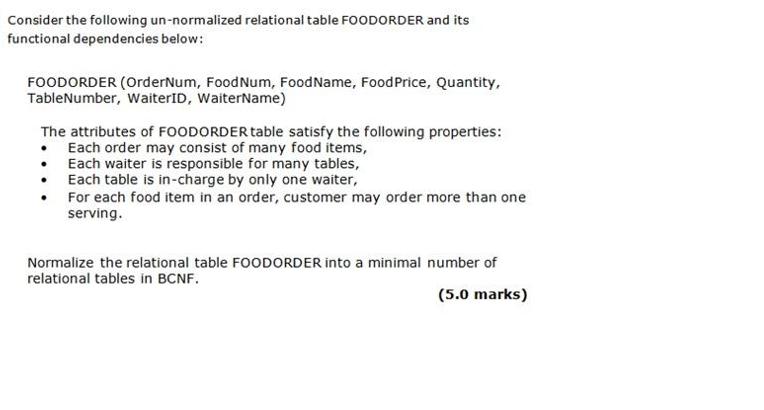Answered step by step
Verified Expert Solution
Question
1 Approved Answer
Consider the following un-normalized relational table FOODORDER and its functional dependencies below: FOODORDER (OrderNum, Food Num, Food Name, Food Price, Quantity, TableNumber, WaiterID, WaiterName)

Consider the following un-normalized relational table FOODORDER and its functional dependencies below: FOODORDER (OrderNum, Food Num, Food Name, Food Price, Quantity, TableNumber, WaiterID, WaiterName) The attributes of FOODORDER table satisfy the following properties: Each order may consist of many food items, Each waiter is responsible for many tables, Each table is in-charge by only one waiter, For each food item in an order, customer may order more than one serving. Normalize the relational table FOODORDER into a minimal number of relational tables in BCNF. (5.0 marks)
Step by Step Solution
There are 3 Steps involved in it
Step: 1

Get Instant Access to Expert-Tailored Solutions
See step-by-step solutions with expert insights and AI powered tools for academic success
Step: 2

Step: 3

Ace Your Homework with AI
Get the answers you need in no time with our AI-driven, step-by-step assistance
Get Started


